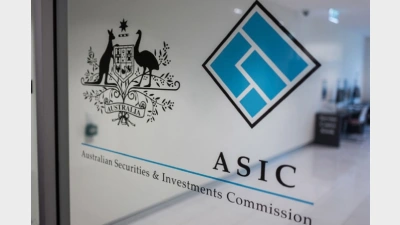(May-2002) Slicing up the asset pie
When one sees or hears the word ‘Government’, it is often accompanied by other words such as bureaucracy, legislation or even incompetence. Rarely is it associated with words such as ‘dynamism’ or ‘high risk’.
However, in the world of superannuation, this is the way government funds emerge when their asset allocations are analysed.
The TOP 300 survey reveals, on average, that government super funds have a much higher allocation to growth assets (equities, property and private equity), that of 80 per cent, compared to their corporate (71 per cent) and industry (71 per cent) fund counterparts.
Principal at Mercer Investment Consulting David Hartley says one of the reasons for this is a difference in the liability profiles of many public sector funds, with many still paying indexed pensions to members.
David McMahon, the director of consulting at Frank Russell, also highlights the ‘pay-as-you-go’ nature of many government funds as being a factor. However, he goes further and points out that the public sector funds have taxing power — and with it greater certainty of being able to meet future benefit payments — which is perhaps facilitating higher risk investment strategies in the interim.
However, the director of asset consulting at Towers Perrin, Paul Laband, says the figures in the survey may have been affected by some funds adopting ‘smoothing’ policies — a method used by funds to reduce market volatility in the short-term.
“Clearly a fund’s reserving policy can have an influence on asset allocation… there is an argument that funds with ‘smoothing’ policies can be a bit more aggressive in their investment strategy,” Laband says.
In response to the figures in the TOP 300 survey, McMahon stresses the importance of analysing asset allocation figures on a case-by-case basis.
“I don’t think you can generalise the reasons [for the variance in allocations between funds], you have to look at the circumstances of each fund and what is driving it… in terms of advice, methodology and what the trustees themselves consider important,” he says.
McMahon says there are innumerable factors a super fund has to account for before plotting its investment strategy.
“A client’s risk tolerance may change, or its liability may change if there is a major change in the demographics of its member base, while other changes may be market related,” he says.
He adds that a fund’s asset allocation is often influenced by the investment strategy of its competitors, as trustees are wary of underperforming relative to competitors, which could see them lose members.
Mercer’s Hartley believes peer group assessment is more pronounced for corporate funds. “Corporate funds tend to be closer to our pooled fund survey average structure than the other funds,” he says. “This is probably because a number continue to use these pooled funds and also because a number do use the pooled fund survey as one of a series of peer group comparisons.”
Going forward, McMahon cites the industry wide increased exposure to international equities and increasing propensity towards unlisted assets as areas to watch.
“As more money pours into our superannuation system, people are diversifying through offshore investments. Secondly, a trend has developed to increase allocations to unlisted assets, such as private equity or unlisted property assets, which I believe will continue,” he says.
Highlighting the shift in funds’ exposure to overseas equities, Hartley says over the last decade or so, the average manager in our pooled fund survey has moved its equity exposure from 40 per cent Australian and 18 per cent international, to 38 per cent Australian and 25 per cent international.
Laband adds: “By and large, over the last several years, the Towers Perrin advice has been to have an above average exposure to international equities … It’s not that international equities will necessarily provide a greater return, but more to do with risk management.”
Laband even toys with the idea of there eventually being no domestic or international equities but simply one equity market. Still, he anticipates that it is many years from becoming a reality.
“I think the logic of an integrated world is to have one equity market … [However,] the integration to date is occurring at the large cap end of the market and it’s not happening at the small cap end … I think the country influence on small caps will remain the predominant influence for the foreseeable future,” he says.
Recommended for you
The structural shift towards active ETFs will reshape the asset management industry, according to McKinsey, and financial advisers will be a key group for managers to focus their distribution.
ASIC has warned that practices across the $200 billion private credit market are inconsistent and, in some cases, require serious improvement.
A surge in electricity prices has driven the monthly Consumer Price Index to its highest level in a year, exceeding forecasts.
Infrastructure well-positioned to hedge against global uncertainty, says investment chief.







